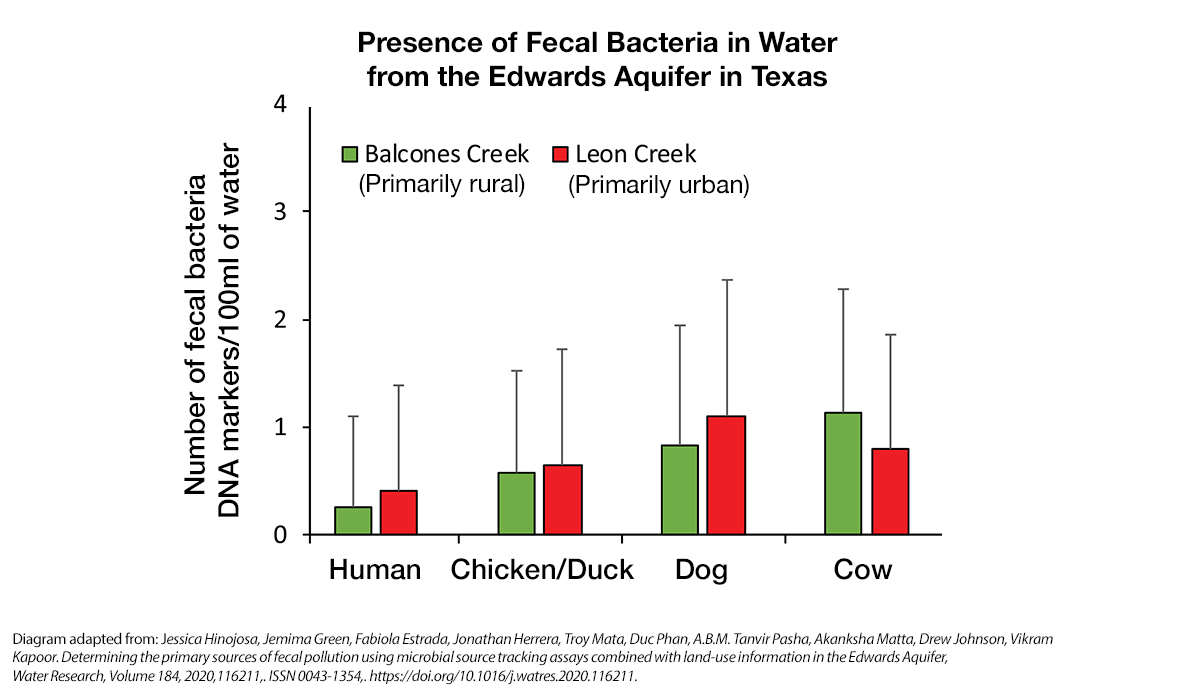We like to think our water is free of fecal waste. Unfortunately, traces of human and animal feces can make its way in, bringing along harmful bacteria, such as E. coli. More than just gross to think about, fecal bacteria in water can cause serious illness and death.
Water from groundwater aquifers is especially vulnerable to fecal contamination. Ground-level contaminants can soak through the soil and seep into the groundwater where rocky layers of sediment imperfectly filter the water before its being drawn back up above ground for residential use. Aquifers provide drinking and recreational water for 20% of the US population but cause over 30% of waterborne disease, including outbreaks of gastroenteritis and norovirus traced to aquifers in Ohio and Wisconsin.
To identify which species are common sources of contamination, Vikram Kapoor and colleagues analyzed fecal bacteria DNA in water from the Edwards Aquifer in Texas, which provides water for over 2 million residents in the San Antonio region. In urban settings, fecal contamination largely came from dogs and human waste that leaked from residential septic tanks. In rural areas, the fecal bacteria largely came from cows and other livestock.
Fecal contamination of groundwater is a growing concern in areas threatened by increasing precipitation and flooding due to climate change. Heavy rains can overwhelm the naturally-occurring filters, releasing higher levels of contaminants into residential water.
Researchers and water quality experts have long known to keep an eye on the level of fecal bacteria in groundwater. But until DNA analysis became available, it was difficult to confirm the source of contamination. Identifying the sources of fecal contamination is critical for targeting clean-up efforts and pinpointing the origins of disease outbreaks.
In the meantime, you may consider picking up your dog’s waste before you end up drinking it.
Databyte via Jessica Hinojosa, Jemima Green, Fabiola Estrada, Jonathan Herrera, Troy Mata, Duc Phan, A.B.M. Tanvir Pasha, Akanksha Matta, Drew Johnson, Vikram Kapoor. Determining the primary sources of fecal pollution using microbial source tracking assays combined with land-use information in the Edwards Aquifer. Water Research, Volume 184, 2020. Visualization by Tasha McAbee.














